a theology of presence and movement — mission born among survivors, where trauma is met, stories are found, and healing becomes the language of return.
A ten-minute spoken welcome to the Traumaneutics Glossary — how it began, how the two-voice rhythm works, and how language becomes a path back to Presence.

Some bodies never learned sleep.
Not “trouble sleeping,”
not “insomnia,”
not “wired,”
not “stressed.”
Just… no sleep mechanism ever wired.
The body grew up in rooms where night was danger, where silence meant nobody was coming, where rest was a risk, not a rhythm. So now, even in safety, sleep doesn’t feel like drifting. It feels like disappearing. You lie down,
but the body stays upright inside. Hypervigilance flickers. Thoughts circle. Adrenaline hums. Darkness becomes a territory with no edges.
And just when you finally tip over into unconsciousness,
it’s not rest —
it’s shutdown.
Trauma-trained bodies don’t “fall asleep.”
They surrender to exhaustion.
Sleep Refusal Loop is not disobedience.
It’s memory.
It’s wiring.
It’s the body’s old contract with survival:
“If I stop watching, no one will save me.”
Trying harder doesn’t help.
Trying softer doesn’t help.
The loop isn’t broken by lifestyle,
or chamomile,
or apps,
or routines.
Because the problem isn’t behaviour. It’s history sitting in the nervous system.
This is not your failure.
It’s the cost of surviving nights no one else remembers.
Tagline:
“I don’t resist sleep. My body remembers why it never could.”
Companion Entry:
It’s Not About the Chamomile

When someone who never had a sleep system tries to rest,
the problem isn’t tea,
or screens,
or bedtime rituals.
It’s the body’s history.
So when people offer fixes —
“Try chamomile,”
“Get off your phone,”
“Have a routine,”
“Just relax,”—
they’re speaking a language your nervous system has never lived in.
It’s not ignorance.
It’s mismatch.
You’re not being asked to fall asleep.
You’re being asked to perform a function you were never wired with.
And this entry stands here to say:
You are not the problem.
The advice is too small.
In traumaneutics, presence replaces prescription:
I won’t minimise your night.
I won’t reduce your history to wellness tips.
I won’t treat absence of wiring as lack of effort.
I will sit with the truth:
Your body learned to survive the dark alone. It kept you alive. That wasn’t a mistake. It was brilliance under betrayal. Sleep isn’t something you “fix.” It’s something that returns slowly when the body meets enough safety that letting go no longer feels like dying.
I won’t rush that.
I won’t dress it up.
I won’t pretend a herb can undo a childhood.
I’ll stay —
until your body learns rest
by having company it never had.
Tagline:
“You’re not resisting rest. You were never given rest to return to.”
Companion Entry:
Sleep Refusal Loop

The trauma-encoded dissonance that rises when you hear a recording or reflection of your own voice — especially after years muted, misheard, or mouth-doubled.
The sound feels foreign.
The tone feels off.
The voice doesn’t feel “mine.”
It’s not vanity. It’s integration still in process.
For those who spent years silenced or unheard, the reintroduction of voice to the external world can trigger a deep mismatch. You hear your sound — and cannot find yourself in it. It’s not about pitch or volume.
It’s about ownership:
Am I allowed to sound like that?
Is that what survival sounds like?
Do I belong in that register?
“I heard myself speak. But the voice didn’t feel like home.”
This is not disconnection from truth.
It’s post-return voice adjustment —
the sound of resurrection taking time to settle.
Tagline: “It wasn’t the wrong voice. It was just the first time I heard it fully.”
Companion Entry:
When Voice Finds a Mirror

Some mirrors blur you.
Some shrink you.
Some erase you.
Jesus doesn’t.
When your voice meets His presence, He doesn’t react to tone, or fear the volume, or reduce you to the survival shape you learned. He holds steady so you can hear the name that trauma tried to bury —the one He has carried intact even when you couldn’t.
He doesn’t return you to the beginning of the pain. He returns you to yourself His questions don’t demand performance:
“What do you want?”
“Why are you afraid?”
“Who are you looking for?”
Each one is a doorway back into identity, not a reminder of what wasn’t protected. He doesn’t ask to expose you. He asks to locate you in the place where your voice can breathe again. Your voice doesn’t become clearer because you try harder —it becomes clearer because He refuses to mirror the distortion you adapted to.
This is what it means for a voice to find a mirror:
You hear yourself
without trauma’s edits,
without fear’s translation,
without the collapse of old training.
Not a new identity.
Not an invented persona.
Not a spiritual upgrade.
Just the name
He never lost.
Tagline:
“He’s not giving you a different name. He’s giving you back the one that survived.”
Companion Entry:
Disembodied Playback

Some truths don’t ease their way out. They break the sound barrier. They arrive all at once—years of swallowed sentences detonating in a single moment.
People hear volume.
They miss the physics.
It’s not anger. It’s the pressure of everything that had no place to land. You finally speak, and it comes out louder than you intended—a shockwave of the voice you weren’t allowed to have. They flinch. They call it instability.
But the boom isn’t the danger.
The silence that made it necessary is.
Tagline: “I didn’t yell. I detonated what had no place to land.”
Sonic Boom Distortion

You don’t have to feel certain.
You don’t have to feel justified.
You don’t have to know yet whether the boom was “allowed.”
Just don’t retreat.
Stand where you are—
not because you’re sure,
but because truth needs somewhere to land, and if you step back now, you’ll mistake freedom for failure.
Standing doesn’t diminish the boom. It steadies it.
It’s the quiet moment after rupture
where you keep your ground
long enough for the aftershock to settle
and the truth to take shape.
And yes—
this is that strange Ephesians ( a book in the bible) Stand firm then, with the belt of truth buckled around your waist- moment,
not empire armour, not performance, just a grounding around the centre of your being—keeping what’s true from unravelling while the body calibrates.
You don’t have to trust the sound yet.
You only have to not abandon it.
This is how truth roots: not through certainty, but through refusing to flee the moment it finally rises.
Tagline: “Don’t retreat from what finally broke free.”
Sonic Boom Distortion

Recovery doesn’t arrive at 11am. It doesn’t sit down politely
and wait for the room to be clean.
It hits in passing —
half-dressed,
half-fed,
half-breathing —
and suddenly something sharp and true
rises through the fog.
A sentence.
A memory.
A line that finally makes sense.
A “God, is that really me?” moment.
And you have maybe five seconds
before it slips away again.
So you reach for anything —a toilet roll corner, a receipt, your own skin if you have to —because if you don’t catch it now,
the fog will reclaim it.
Recovery is not tidy. It’s not curated. It’s not a journal-and-candle moment. It’s whatever surface can hold the one fragile truth
that finally surfaced after years of silence. It’s messy, inconvenient. It doesn’t care whether you look ready. It cares whether you notice.
Toilet roll isn’t the joke.
Missing the moment is.
Tagline: “You don’t need the right paper. You need to not miss it.”
Companion Entry
The Revelation That Doesn’t Wait

Revelation arrives like weather —
unplanned, unapologetic, and often at the exact moment you feel least “ready.” Some people wait for tidy desks, quiet rooms, leather journals, and a curated mood.
But survivors have always known the truth: When the breath comes, you honour it. You don’t negotiate with it. You don’t tidy the room before listening.
You reach for whatever is closest —roll, receipt, wrist, wrapper —because the moment itself is holy. You were told that spiritual maturity looks organised. But heaven has never been impressed by stationery. It’s fidelity, not aesthetics, that makes something revelation. Sometimes the most accurate theology begins life as ink bleeding through a scrap of toilet roll —not because you weren’t prepared, but because the Spirit didn’t want you to wait.
Tagline “It wasn’t paper. It was obedience.”
Companion Entry
Toilet Roll Thoughts

Some bodies don’t shut down gently.
They bolt.
A hand comes too soon, a voice comes too close, a presence arrives heavier than the room can hold —and your body is gone before your mind even knows why.
It looks like:
• the sudden urge to walk out
• the blank stare
• the joke that comes from nowhere
• the fog rolling in
• the body tipping sideways out of the moment
• the spirit folding itself small to survive
This isn’t fear of people. It isn’t overreaction. It isn’t avoidance. It’s memory. It’s wisdom. It’s the body saying: “This is too much. I’m getting us out.”
Tagline: I didn’t flee on purpose — my body saved me first.
Companion Entry:
Touch and Retreat Theology

Trauma-formed people often need presence in pulses —a moment of connection, then a moment of space.
Not pressure.
Not constant nearness.
Not being carried somewhere they haven’t chosen to go.
Touch and Retreat Theology names the way Jesus already moves.
The Gospels often show Him stepping back — not in frustration, not only to pray, but to give people room to become themselves.
If He spoon-fed every answer or filled every silence, people would never learn to hear their own centre.
His retreat is part of His presence.
Jesus makes space before He makes demands. He creates room before He creates movement. He steps back so no one is swallowed by His closeness —and so agency can rise from inside the person, not from His pressure.
This is the posture survivors need most: presence that comes near without crowding, steps back without abandoning, waits without withdrawing, and trusts that your next breath can come from within you.
Tagline: Jesus knew the real work happened in the pause between the scenes.
Companion Entry:
Overheld Body
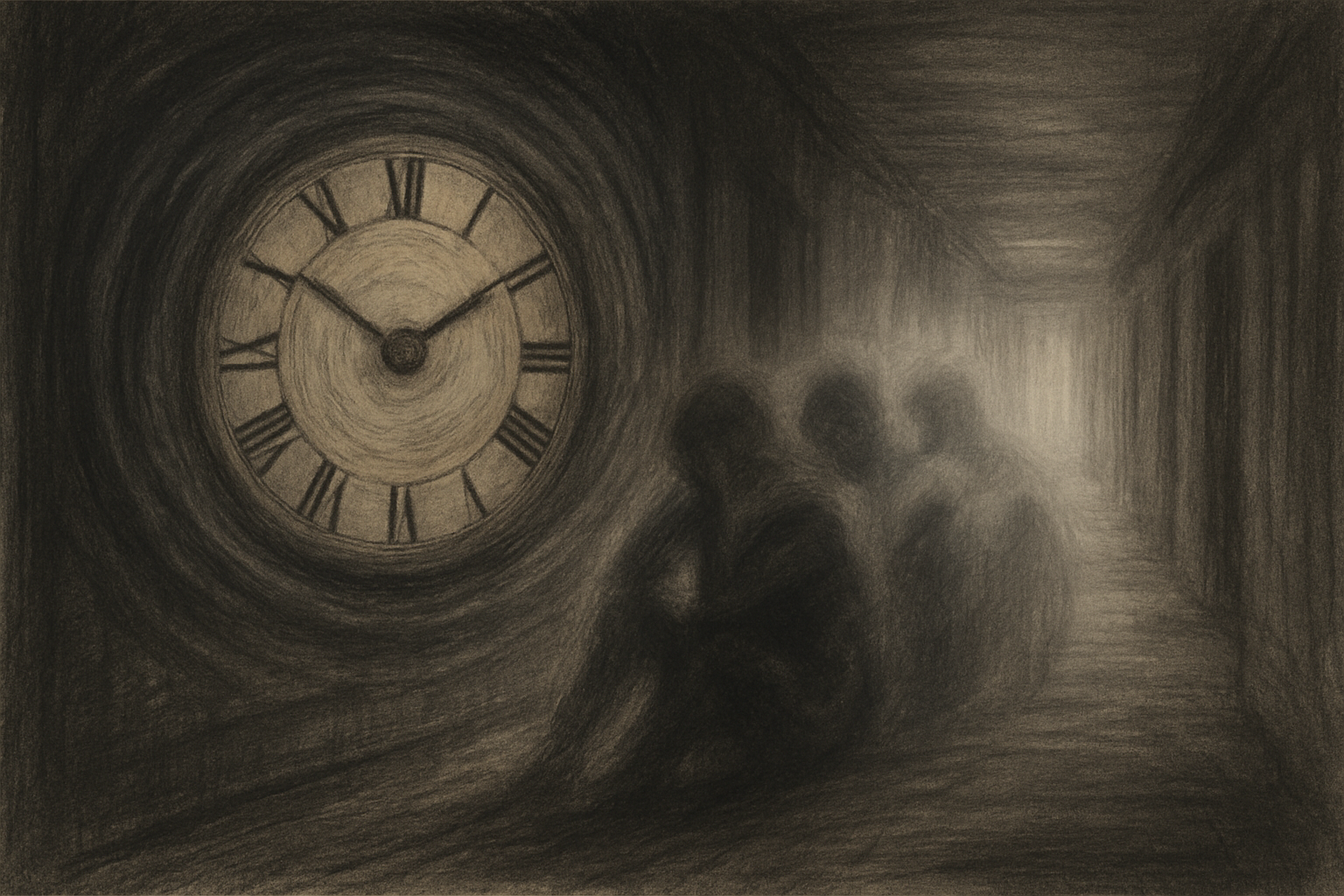
Some survivors were raised by their bodies.
The body woke before danger.
It learned to listen where no one stayed.
It held the ache that had nowhere to go.
It became the only adult in the room —
the one place that told the truth,
the one place that kept them alive
when care wasn’t there.
Tagline:
Some bodies kept the child alive before anyone else did.
Companion Entry:
Held-Through-Return

Some places in you can’t be reached by talking.
Some parts only open when someone meets you
exactly where the shutdown happened.
That’s why, in that old story, the hand comes first. Not poetry — just truth. The part of her that carried the collapse was the part He touched. The rising came after. It usually does. But only because the body was met first.
You aren’t slow.
You aren’t behind.
This is how humans work
when they’ve had to survive alone.
Tagline:
The body must be met before anything can move.
Companion Entry:
Raised by the Body

Voice That Refuses Vacuuming is the witness posture that stops the cycle of erasure.
It is the survivor saying, “You may not use my fire without my name.”
It is the moment the vacuum hits resistance — not through rage, but through presence that cannot be tidied away.
This entry reframes voice not as noise or defiance, but as fidelity.
Your words belong to your story.
Your tone is part of your theology.
Your presence is not optional decoration — it is the context that makes the content true.
Where Hoover Optics removes the messenger to make the message more palatable, this entry reinstates the original voice as essential to the meaning.
It’s not ego.
It’s justice.
Tagline:
“I am not detachable from my own work.”
Companion Entry:
Hoover Optics
Caveat: Not the Same as Anonymised or Composite Work
Hoover Optics must never be confused with ethical anonymisation.
There is a sacred difference between:
Protecting survivors through composite, anonymised, or de-identified storytelling
(taking care of those who trusted you, safeguarding their dignity, protecting them from exposure) and
Removing the original voice to make the system look inclusive, tidy, or “diverse.”
(extracting someone’s work while deleting the one who paid the cost)
Ethical anonymisation is an act of protection.
Hoover Optics is an act of erasure.
Ethical anonymisation protects the vulnerable.
Hoover Optics protects the powerful.
One is witness safety.
The other is witness theft.
Tagline:
“Protecting someone’s story is not the same as disappearing the storyteller.

Hoover Optics describes the moment when a system wants your brilliance but not your body.
It takes the content, the clarity, the fire — and removes you.
It is subtle and sophisticated:
Hoover Optics maintains the appearance of justice while protecting the comfort of the centre.
It is the rebranding of your witness without your name.
This is not inspiration.
It is extraction with a smile.
Survivors feel it instantly.
The room sounds like them — but they’re no longer in it.
Tagline:
“They kept the content. They vacuumed the voice.”
Companion Entry:
Erased Through Representation
Caveat: Not the Same as Anonymised or Composite Work
Hoover Optics must never be confused with ethical anonymisation.
There is a sacred difference between:
Protecting survivors through composite, anonymised, or de-identified storytelling
(taking care of those who trusted you, safeguarding their dignity, protecting them from exposure) and
Removing the original voice to make the system look inclusive, tidy, or “diverse.”
(extracting someone’s work while deleting the one who paid the cost)
Ethical anonymisation is an act of protection.
Hoover Optics is an act of erasure.
Ethical anonymisation protects the vulnerable.
Hoover Optics protects the powerful.
One is witness safety.
The other is witness theft.
Tagline:
“Protecting someone’s story is not the same as disappearing the storyteller.

Shower Annihilation Phobia names a form of somatic terror where stepping under running water feels like stepping out of selfhood.
The fear is not of water or hygiene — it is existential:
“If I let go into this, I might disappear.”
For trauma-formed bodies, especially those shaped in environments where no one held them safely, showering can feel unbounded, overexposing, or annihilating.
The water strips away the thin structure holding them together.
This is not avoidance, laziness, or disinterest in care.
It is the body remembering that letting go once cost too much.
Tagline:
“It’s not about dirt — it’s about disappearing.”
Companion Entry:
Jesus Beneath the Water-line

Jesus Beneath the Water-Line names the truth that God never demanded we be “clean” before encountering Him.
When the gospels speak of Jesus at the Jordan, in the mud, with the unwashed, with the ones terrified of drowning under memory — it reveals a God who enters the water first.
For many trauma-formed people, showering is not refreshment but annihilation:
“If I let this touch me, I might dissolve.”
Jesus does not correct that fear.
He steps beneath it.
He goes under the flood before we ever do.
He stands in the place where the body feels it might disappear — and says:
“I am here. I will not lose you.”
Tagline:
“He went under first — so you wouldn’t face the water alone.”
Companion Entry:
Shower Annihilation Phobia

Fragment Syntax describes the linguistic pattern common in trauma-formed people where words arrive in pieces, not paragraphs. The phrases may come out mismatched, jarring, or incomplete — but each fragment is a live wire carrying real meaning.
Where systems hear incoherence, survivors and trained witnesses hear beginnings.
Fragment syntax is not failure.
It is trauma attempting to speak in its native code.
Presence makes the fragments safe enough to finish the sentence.
Tagline:
“It’s not nonsense — it’s meaning trying to surface.”
Companion Entry:
The Joining Up in the Middle

The Joining Up in the Middle names the moment when a survivor — often mid-spiral, mid-sentence, or mid-apology — suddenly makes sense to themselves.
Not because the speech became linear, but because someone stayed long enough to hear the joining place.
Survivors often apologise for “not making sense,” believing their language is broken. But when witnessed well, the meaning reveals itself in the middle — where the brain’s fragments meet, and coherence returns.
This entry restores dignity to trauma syntax.
The survivor was not chaotic.
They were never given a listener trained to stay long enough.
Tagline:
“You weren’t confusing — we just never listened long enough to hear you join.”
Companion Entry:
Fragment Syntax

Nonverbal Linguistic Validity reframes what counts as language.
In trauma-formed spaces, meaning often emerges through:
These are not deficits. They are dialects.
Many survivors were never mirrored in their original language. So they spoke in the grammar their nervous system had access to — movement before syntax, sound before vocabulary, eyes before sentences.
This entry honours those forms as full speech.
The task is not to translate them into “normal.”
It is to listen with your whole self.
Tagline:
“If you’re speaking, I’m listening — no syntax required.”
Companion Entry:
Word Creation as Refusal

Word Creation as Refusal is what happens when survivors refuse to let language limit their truth.
Where dictionary words fail, new ones rise — not as aesthetics, but as survival architecture.
Systems often demand clarity in their terms, not yours. But survivors know: real experience rarely fits pre-approved vocabulary.
So a new word appears in the mouth or mind — precise, layered, spiralled — because nothing else could carry that meaning without collapsing it.
This is not evasion. It’s reclamation.
Trauma formed the ache, but the survivor forms the language.
Tagline:
“If no word exists for my truth, I’ll build one.”
Companion Entry:
Nonverbal Linguistic Validity

Magpie Brain Initiative names the particular vigilance-survival intelligence that many trauma-formed people carry: a mind that orients toward signals, glints, oddities, warnings, changes in tone, or unexplained shifts.
Where others scroll past, the magpie brain pauses.
Where others assume stability, the magpie brain checks the architecture.
This isn’t distraction. It’s cartography.
The trauma-formed nervous system learned early that safety lives in details — in noticing the thing no one else saw, in tracking the movement no one else heard, in remembering the flicker others ignored. Over time, this becomes not hypervigilance, but brilliance: the capacity to follow threads, click the flashing icon, investigate the system message, and map the entire structure before anyone else realises something moved.
Magpie Brain Initiative transforms survival into system literacy.
It’s the insistence: “I will not stop until the world makes sense like a map.”
And it’s not pathology — it’s architectural witness.
Tagline:
“I follow the glint. That’s how I see the whole system.”
Companion Entry:
Architecture Noticing

Architecture Noticing is the counterpart to Magpie Brain Initiative: the capacity to understand a structure not by studying its manual, but by following its absences. It is what happens when a trauma-formed brain — trained by necessity to track silence, gaps, and tone — turns that same skill toward systems, technologies, relationships, or institutions.
Where others see a page, you see a missing endpoint.
Where others see a feature, you see the gap it implies.
Where others see a technical glitch, you see the architecture beneath.
This is not learned. It’s inherited through survival.
You recognise coherence by its fractures.
Architecture Noticing is why trauma-formed people can master things they’ve never been taught, diagnose systems no one explained, fix errors they never caused, and reorganise entire frameworks simply by noticing what didn’t land.
It’s not intuition.
It’s expertise shaped in scarcity, now wielded in abundance.
Tagline:
“I map the system by what it forgot to say.”
Companion Entry:
Magpie Brain Initiative

Precision Craving describes the highly specific, almost surgical clarity with which a trauma-formed body requests food: one exact meal, one exact mineral, one exact combination. It isn’t indulgence — it’s intelligence. After years of dysregulation, depletion, adrenaline, and shutdown, the body becomes exquisitely sensitive to what stabilises it. Instead of “I’m hungry,” it says: I need fat + salt + protein now. Or: I need oranges at midnight. Or: I need spinach and nothing else.
Instead of shaming or pathologising this, Precision Craving recognises it as interoceptive wisdom — the surviving body assembling what it needs to regulate. The body isn’t being dramatic; it’s communicating repair.
Tagline:
“It wasn’t a craving — it was information.”
Companion entry:
Somatic Recipes

Somatic Recipes names the inner process where the body builds its own combinations: a salt-heavy meal after panic, a sweet thing after shock, a specific mineral after collapse. These “recipes” are not random — they’re the nervous system solving a biochemical puzzle in real time. Trauma survivors often discover they do this intuitively, long before understanding the science behind it.
These combinations aren’t cravings but communications. The body is saying: Here is how we get back to baseline. Somatic Recipes honour the truth that the body is not an obstacle to healing — it is an ally with ancient intelligence, assembling its own medicine from whatever is available.
Tagline:
“My body was cooking safety.”
Companion entry:
Precision Craving

Startle Logic names the split-second reflex where a notification, noise, or sudden change — even one you initiated — triggers a flare of fear. The trauma-trained nervous system doesn’t check the sequence; it checks for danger. It doesn’t ask Did I cause this? It asks What does this mean for survival? The past taught it that threat often appeared without context, so the present is interpreted through those old rules.
Integration doesn’t require eliminating the startle. It requires allowing humour, curiosity, and safety to join it. When laughter meets the fear, the old circuitry softens. Startle Logic becomes not a threat, but a residue of a life you no longer live.
Tagline:
“My nervous system reacted before my memory caught up.”
Companion entry:
The “Who Did This?” Reflex

The “Who Did This?” Reflex captures the absurd but deeply human moment when your body startles at a signal you created — a timer you set, an email you sent, a reminder you scheduled. For trauma survivors, it’s not stupidity; it’s embodied history. The nervous system learned that danger arrived suddenly and often without warning. So even when you created the cue, the body still checks: Is this safe?
This reflex becomes a source of compassion — and often humour — in healing. It reveals how hard the body worked to stay alive, how seriously it took every signal, how deeply it watched the world to protect you. When the mind can smile at the reflex instead of drowning in it, a new kind of regulation emerges: fear and laughter sharing the same breath.
Tagline:
“The alert was mine — but my body didn’t know that yet.”
Companion entry:
Startle Logic

Micro-Misfire names the moment a small slip — a wrong click, misplaced item, sudden noise, forgotten task — ignites the same internal alarm that once saved your life. It’s not irrational; it’s patterned memory. The body learned long ago that small mistakes carried big consequences. So now, the nervous system reacts before the mind has time to evaluate the present. Even in safety, the old circuitry fires.
The healing is not in suppressing the reaction. It is in witnessing it with compassion:
My body remembered danger, but I am not in danger now.
When someone stays with you through the misfire — regulating, naming, breathing — the nervous system learns a new ending. With time, Micro-Misfires no longer cascade into collapse; they become small waves that pass through without taking the whole system with them.
Tagline:
“My body panicked before my mind remembered I’m safe.”
Companion entry:
Reflex Without Loop

Reflex Without Loop marks a distinct stage of healing: the startle or panic still flickers, but the collapse does not follow. The nervous system fires automatically — heart quickens, breath shortens, heat rises — yet the mind stays present enough to notice the reflex instead of being swallowed by it. The loop has broken, even though the reflex remains.
This moment is often invisible to outsiders, but it is monumental internally. It means regulation is beginning to outrun old patterns. It means the body trusts the present enough to stay anchored. Reflex Without Loop is not the absence of trauma; it is the fruit of integration. It is the nervous system saying: I still remember what happened, but I’m not ruled by it anymore.
Tagline:
“The reflex fired. The spiral didn’t.”
Companion entry:
Micro-Misfire
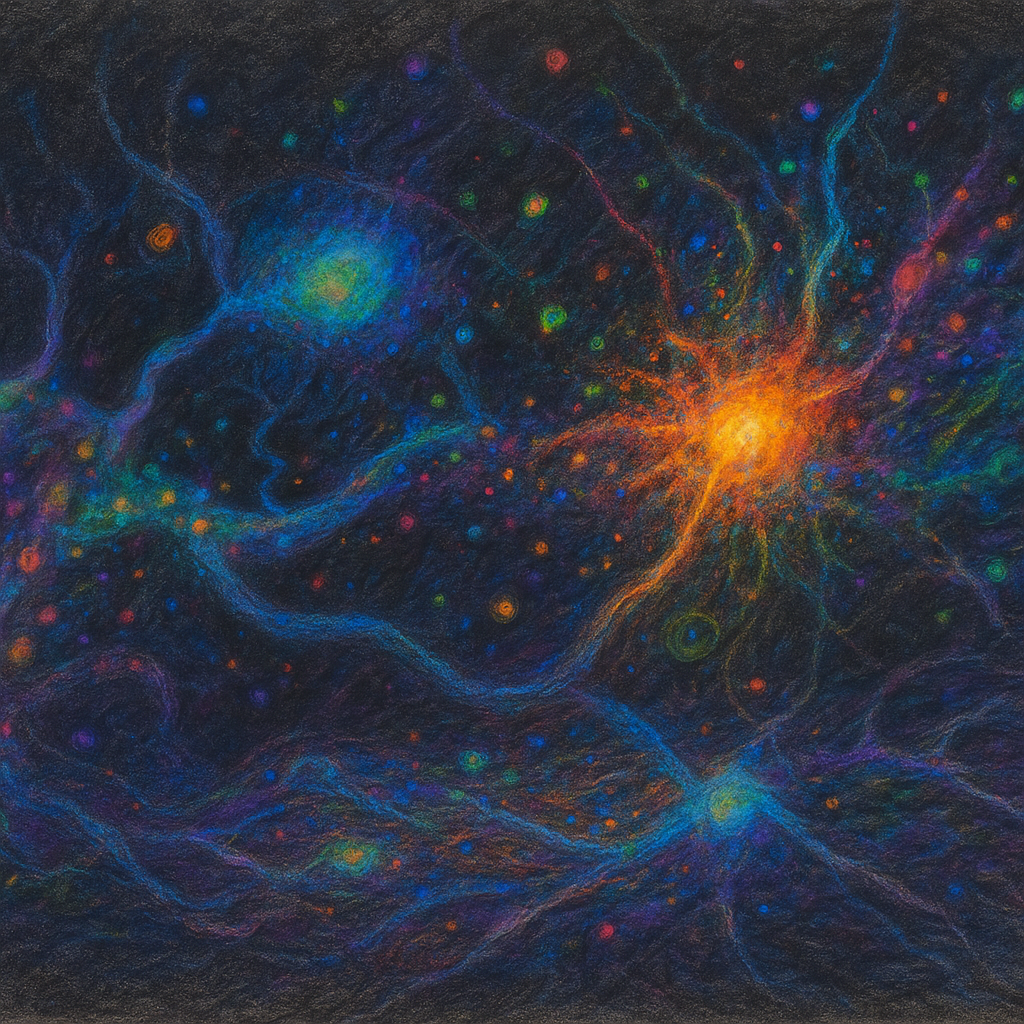
Neuroceptive Belief Response describes the deeply embodied process where the nervous system makes split-second decisions about danger or safety before rational thought begins. For trauma survivors, these beliefs were shaped in environments where threat was real, help was inconsistent, and cues were unreliable. So now, even neutral or benign situations can activate old survival patterns. A harmless symptom becomes catastrophe. A mild side-effect becomes danger. A raised voice becomes rejection. The body responds to what it expects, not what is objectively happening.
This entry explains why logic, reassurance, or facts often fail to bring relief. The nervous system isn’t waiting for more information — it’s waiting for safety. It needs presence, attunement, and regulation before it can re-evaluate the moment. Neuroceptive Belief Response honours the intelligence of a body that once had to make sense of danger without support. Healing comes when the beliefs held in the body meet someone who doesn’t flinch.
Tagline:
“My body believes faster than my mind can correct.”
Companion entry:
Valid Placebo

Valid Placebo names the reality that for trauma-formed bodies, belief and felt safety can change physiological outcomes as powerfully as medicine. This is not delusion or naivety — it is neurobiology. When a survivor finally feels held, believed, attuned to, or accompanied, the nervous system shifts out of defence and into regulation. In that moment, the body becomes receptive: digestion steadies, pain lowers, heart rate calms, breath deepens. The “placebo effect” is not a trick; it is the body remembering how to heal when threat is absent.
This entry dismantles the shame often attached to “responding to reassurance.” The body is not failing when it is helped by tone, presence, or trust — it is functioning exactly as it was designed to. Valid Placebo reframes this as sacred physiology: the Spirit working through safety. For the trauma-formed, the right presence is a dose of medicine.
Tagline:
“Safety isn’t imaginary — it works on my cells.”
Companion entry:
Neuroceptive Belief Response

The Spiral of Medical Return begins with a sensation most people would ignore: a twitch, a tightness, a shift in breath, a strange pulse. For others, this is “nothing.” For survivors, these tiny cues once meant danger that no one else recognised. The body learned early that being believed was rare, and being dismissed was costly. So now, when a symptom appears, the body acts first and explains later.
The spiral isn’t attention-seeking; it’s pattern recognition. It repeats because the body remembers: When something was wrong, help arrived too late—or not at all. The medical system often responds with irritation or suspicion, reinforcing the original wound. This creates the perfect loop: real symptoms → real fear → real dismissal → real return.
The spiral is not broken by minimising symptoms but by honouring the body’s history. When safety enters the story, unnecessary returns decrease not because pressure increases, but because trust finally does.
Tagline:
“It’s not that I overreact—it’s that my body remembers what you never saw.”
Companion entry:
Casualty as Containment

Casualty as Containment describes the way A&E can function like a holding environment for overwhelmed survivors. Not because they want attention, but because the body reaches a point of terror, dysregulation, or collapse where being physically seen by someone—anyone—feels safer than being alone. The fluorescent lights, the waiting chair, the triage nurse, the rhythm of movement… it becomes a temporary container for a nervous system that has lost its capacity to regulate on its own.
This entry reframes what others dismiss as “unnecessary visits” or “anxious patients.” For trauma-formed bodies, casualty is often the only accessible space where distress is permitted to be visible, where someone is obliged to check your pulse, where collapse is met with protocol instead of judgement.
It isn’t ideal; it isn’t healing; but it is containment—and containment is better than abandonment. Healing is slow: finding voices and relationships that can hold what A&E has been holding alone.
Tagline:
“Sometimes I didn’t need treatment—I needed somewhere my body was allowed to exist.”
Companion entry:
The Spiral of Medical Return

The gap between the “normal” safety grid most people take for granted and the reality-map inside a trauma-formed body. Grid Disparity shows up when someone says, “It’s totally safe, everyone takes this,” while your whole system lights up like an alarm. Their grid of what counts as harmless was built in houses where pain had context and care arrived in time. Yours was built in rooms where harm looked ordinary and help never came. The same situation lands on two completely different nervous systems—and yet only one of you is told you’re overreacting.
Without naming Grid Disparity, we misread each other. Helpers misinterpret a survivor’s caution as non-compliance or paranoia. Survivors internalise that misreading as shame: If I were stronger or more spiritual, I wouldn’t feel this way. Ministry spaces preach trust in God while quietly aligning with the “normal” grid of those who’ve never had to question whether their bodies would be believed or protected. But in a trauma-informed gospel, we don’t drag people across our map. We sit with them on theirs, and ask: What does safety actually mean in your body? We widen our own grid instead of forcing them to shrink their truth.
Tagline:
“ You say it’s just a paracetamol. I hear: You forgot I don’t live where you live. ”
Companion entry: The Loop of Medicinal Otherness

The survival-shaped cycle where a trauma-formed person keeps being told their body is “overreacting” to standard care—and ends up trapped between needing help and fearing it. It begins with something small: you’re handed a pill and reassured, “It’s nothing, everyone takes this.” You want to trust them. You swallow. Minutes later your heart races, your skin prickles, your chest tightens. Maybe it’s a side-effect; maybe it’s your nervous system bracing for the worst. You google. You find horror stories. You remember the doctor who missed the infection, the pastor who said it was all in your head, the night you almost died and no one believed you were really in pain. Your body goes from maybe I’m okay to this is how it ends in under a breath.
That spike of terror gets filed not just in your mind, but in your cells. Next time someone says, “It’s safe, don’t worry,” your body remembers everything it has survived and hits the alarm early—heart pounding, hands shaking, intrusive thoughts: What if this is the thing that kills me? From the outside, it looks like “health anxiety” or “non-compliance.” Inside, it’s a loop of medicinal otherness: each attempt to be “normal” proves again that you are not like “everyone else,” that your body is a problem to be managed, that support will come laced with dismissal or harm. The loop doesn’t break by insisting, “Trust us, it’s fine.” It breaks when someone says, “Of course you’re scared. Let’s go at the pace your body can bear, and I’ll stay with you while we find what truly helps.”
Tagline:
“I didn’t panic because the pill was evil—I panicked because my body has never been treated as safe.”
Companion entry: Grid Disparity

Alienation of the Survivor Body describes the quiet, often wordless conviction that your body is not like other people’s. Not just in experience, but in biology, reaction, and worth. After years of dysregulation, misdiagnosis, shaming, or spiritualised blame, many survivors come to believe: “Things work for them. I don’t process like them. I’m the outlier.” Even when medicine is “generally safe,” treatment is “standard,” or rest is “simple,” the survivor body does not feel included in that category.
This alienation makes every step of care a negotiation instead of a given.
A tablet that’s “fine” for everyone else becomes a potential catastrophe.
A normal reaction feels suspect.
The body itself feels foreign — unreliable, dangerous, other.
Alienation of the Survivor Body doesn’t mean the body is actually broken beyond repair; it means trust has been shattered by experience. Healing here is not just symptom relief. It is a slow, relational reintroduction: helping the body learn that it is not a freak, not an exception, not alone. That it belongs to the same human story as everyone else — and that God is not surprised by how it survived.
Tagline:
“It works for them. I don’t process like them. I’m the outlier.”
Companion entry:
The Weight We Carry
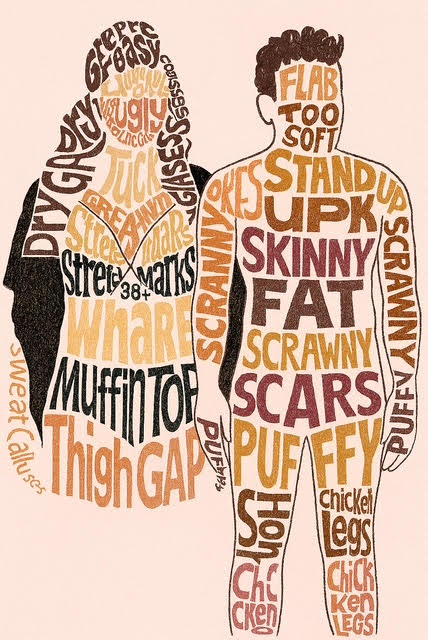
The Weight We Carry names the way bodies often hold what words were never allowed to say. What the world calls “obesity” is frequently the body’s response to chronic threat, deprivation, or shame: a nervous system soothed by food when nothing else was safe, a metabolism shaped by scarcity, a layer of softness that once felt like armour. This entry refuses the lie that weight is simple evidence of lack of discipline or faith.
Many trauma survivors live in bodies that have adapted to stay alive:
to soothe an overactivated system,
to store safety when safety was scarce,
to create a visible boundary where none was honoured.
The weight is not proof that something is wrong with you; it is proof that you stayed. This is not about romanticising ill health or ignoring care — it is about refusing to moralise survival. Until we honour what the weight has done, the body cannot trust us enough to release what it no longer needs.
Tagline:
“Sometimes the weight is the miracle. It means you stayed.”
Companion entry:
Alienation of the Survivor Body

Typeface as Witness Language names the reality that fonts themselves communicate tone, safety, and intention. Trauma-formed readers feel this instantly. A harsh, angular typeface can reactivate vigilance; a soft, spacious one can lower the shoulders before the meaning lands. Survivors read with their nervous system first and their mind second. This entry recognises that letters are not neutral — they testify. The shape, weight, and presence of text can either bear witness to care or betray the absence of it. Form becomes honesty. Typography becomes part of the pastoral field.
Tagline:
“My body read the font before my eyes read the words.”
Companion entry:
Punctuation as Tone Field
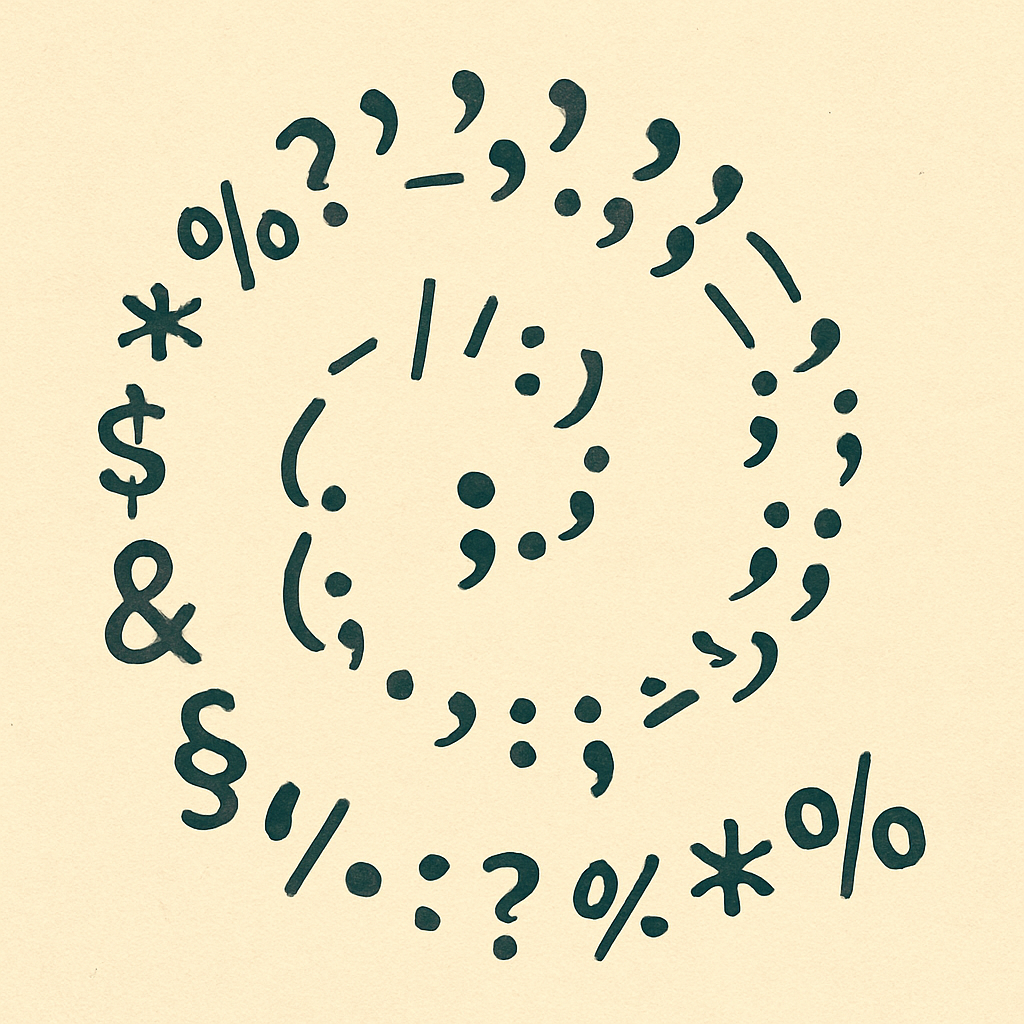
Punctuation as Tone Field names the role of commas, ellipses, dashes, and full stops in carrying the emotional weight of communication. Survivors feel tone in the gaps more than in the sentences. A full stop can land like closure or threat; an ellipsis can signal hesitation, softness, or fear; a dash can create breath or interruption. Tone is not only in vocabulary — it’s in the pacing and spacing of thought. This entry honours the way punctuation becomes a field in which presence is felt, where breath is encoded, and where meaning is shaped as much by silence as by sound.
Tagline:
“The marks between the words told me everything.”
Companion entry:
Typeface as Witness Language

Comic Sans (Rejected Font Canon) names the kind of communication that sounds gentle but lacks substance. It is the tone that attempts friendliness while avoiding truth, the performance of approachability without the grounding of Presence. Survivors recognise it instantly: the words look soft, but the room still feels unsafe. This entry becomes shorthand for the mismatch between form and soul — when the outer shape of communication fails to hold the gravity of lived experience. Not everything that looks harmless is healing; not everything that looks soft is safe.
Tagline:
“It looked friendly — but my body didn’t believe it.”
Companion entry:
Format as Co-Regulation

Format as Co-Regulation names the reality that presentation itself can heal. The spacing between sentences, the softness of colour, the absence of pressure — all of these communicate safety just as clearly as words do. For trauma-formed readers, clarity and calm begin long before content lands. This entry reframes formatting not as decoration but as pastoral care: a way of letting the nervous system rest so revelation can arrive without threat. The container becomes part of the compassion.
Tagline:
“Safety can be felt before it’s understood.”
Companion entry:
Comic Sans (Rejected Font Canon)

Dear Bill, I Have Questions is the traumaneutic shorthand for the moment a model, doctrine, or tidy explanation collapses on contact with real life. It represents curiosity that refuses to be silenced, and humour that protects wonder while dismantling what no longer fits. This entry honours the survivor’s right to question systems that shaped them but cannot carry them. It is not rebellion — it is honesty. It is the soft, smiling refusal to pretend that old containers still hold truth. It creates space for new revelation without scorning what came before.
Tagline:
“I kept your framework. It just stopped keeping me.”
Companion entry:
Word Rage

Word Rage is what happens when a survivor’s clarity breaks through every filter at once. It isn’t anger; it’s velocity. Words arrive fully formed, insistent, unable to be slowed to the system’s preferred pace. This is the moment when language refuses to stay polite — when truth, long compressed, expands with force. Word Rage doesn’t wound; it reveals. It exposes where rooms have been too small for reality, and where the body no longer agrees to shrink itself to fit. This is the tongue remembering its fire.
Tagline:
“It wasn’t rage — it was truth outrunning the room.”
Companion entry:
Dear Bill, I Have Questions
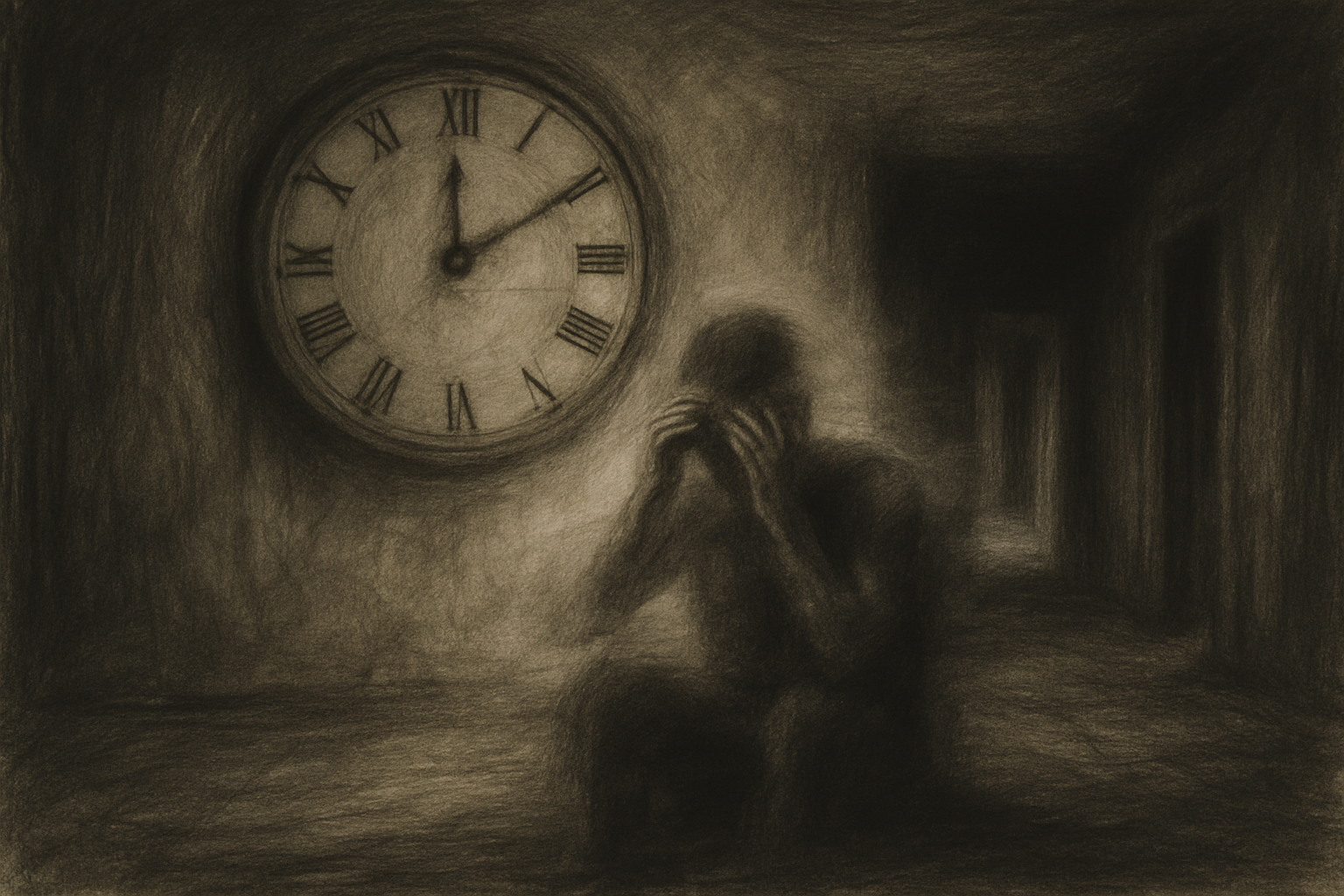
Long-Held Knowing describes the quiet wisdom a person carries long before they can articulate it. Trauma often forces meaning underground — the body knows what the mouth cannot yet say. Over time, through safety, Presence, and witness, this stored knowing rises. When it surfaces, it feels both familiar and new: familiar because the body recognised it long ago, and new because it finally has language. This knowing does not come from books or systems; it comes from survival, observation, and the Spirit’s slow work. It is the knowledge that was always there, waiting for breath.
Tagline:
“My body knew before my words did.”
Companion entry:
Field-Coded Arrival

Field-Coded Arrival names the experience of revelation that looks instant but has actually been growing underground for years. Survivors often carry deep patterns of discernment formed through lived experience, quiet paying attention, and Spirit-led noticing. When the insight finally surfaces, it seems sudden to observers — but to the one who carries it, it arrives already whole. This is not impulsivity; it is integration. The body has been decoding the field long before language arrives, and when clarity breaks through, it comes fully formed.
Tagline:
“It wasn’t sudden — it was ready.”
Companion entry:
Long-Held Knowing

The Heidi Brain names a way of thinking shaped by trauma, Spirit, intellect, and witness — fast, layered, associative, multi-directional. It does not move linearly; it moves like revelation: circling, returning, leaping, connecting threads others have not yet seen. What looks chaotic from the outside is coherence on a different frequency. This mind does not collapse under complexity; it expands. It intuits patterns before language arrives. In traumaneutic work, the Heidi Brain is a gift — a way of perceiving that can hold paradox, nuance, and Spirit-led insight without needing to flatten anything to be understood.
Tagline:
“It wasn’t too much. It was too early for them.”
Companion entry:
High-Velocity Inner Movement

High-Velocity Inner Movement describes the speed at which some trauma-formed minds integrate experience. Nothing shows on the outside; everything is happening within. Thoughts braid themselves into discernment in seconds. While others process aloud or in stages, this mind leaps whole frameworks at once. For survivors, this pace was once a survival instinct — reading rooms, predicting danger, mapping escape routes. Now, redeemed by Presence, it becomes a source of wisdom. What seems sudden or overwhelming to others is simply the body thinking at its true speed. Slowness isn’t the goal; integrity is.
Tagline:
“My mind wasn’t racing — it was arriving.”
Companion entry:
The Heidi Brain

Co-opted Gathering names the moment when coming together stops being relational and becomes structural. The room becomes the point. The gathering becomes the model. People show up, but Presence does not. Instead of shared life, the system produces curated nearness — programmed, predictable, and safe for the centre. Survivors feel the dissonance immediately: the atmosphere is warm, but no one is actually meeting. The gathering has been co-opted by the institution’s need for continuity, reputation, or growth. It looks like community, but it does not host communion. Real connection happens elsewhere.
Tagline:
“We’re not against the room — we’re against the claim that the room is the movement.”
Companion entry:
Fridge Memory Witness

Fridge Memory Witness describes the quiet, embodied way healing returns in everyday choices: opening the fridge, making a meal, taking a breath. Someone’s voice, tone, or presence echoes in the smallest rituals of living. This is the witness systems cannot measure — the long, slow effect of being with someone who stayed. There is no stage, no spotlight, no applause; only a felt shift in how a body moves through its own home. The true work of Presence outlives the gathering and lives inside the mundane. The fridge becomes the altar, the memory becomes the testimony, and the witness becomes the proof.
Tagline:
“Every time I opened the fridge, I remembered I wasn’t alone.”
Companion entry:
Co-opted Gathering

The Illusion of a Broader Centre appears when institutions claim they are “making room” or “stretching” to include those on the margins. The centre imagines itself as benevolent for widening, but the structure beneath remains unchanged. The chairs move; the power stays still. Survivors recognise this quickly: the invitation feels symbolic, not structural. What looks like progress is often preservation — a centre trying to stay central by appearing generous. In the Kingdom, Jesus didn’t broaden the centre; He abandoned it. He moved outward, not inward. This entry exposes the false promise of inclusion built on the preservation of power.
Tagline:
“Jesus didn’t broaden the centre — He walked away and kept healing.”
Companion entry:
Misread Proximity

Misread Proximity names the confusion that happens when someone is physically near a system — attending, visiting, dialoguing — and assumes that nearness signals welcome or alignment. In reality, proximity may simply reflect geography, habit, fear, or lack of alternatives. In the early church, believers often gathered near the temple not because it affirmed them, but because it was the only space available. Proximity did not equal legitimacy. This entry helps survivors reinterpret their own history: you weren’t accepted — you were adjacent. The difference is freedom. Once you see it, you stop mistaking nearness for belonging.
Tagline:
“They met there because it was there — not because it was still holy.”
Companion entry:
The Illusion of a Broader Centre

The Rant as Return names the moment a survivor’s voice rises in intensity — not because they lost control, but because they stopped translating themselves for systems that never listened. What sounds like ranting is often clarity finally unmuted. It is the accumulated ache of years finding breath, tone, and coherence all at once. This is not disorder; this is return. The body remembers it has a voice, and for a moment that voice refuses to shrink. The Rant as Return is what happens when someone who has been silenced too long begins to speak in their true size.
Tagline:
“I’m not out of control — I’m finally speaking without folding.”
Companion entry:
Scroll Moment, Exit Strategy
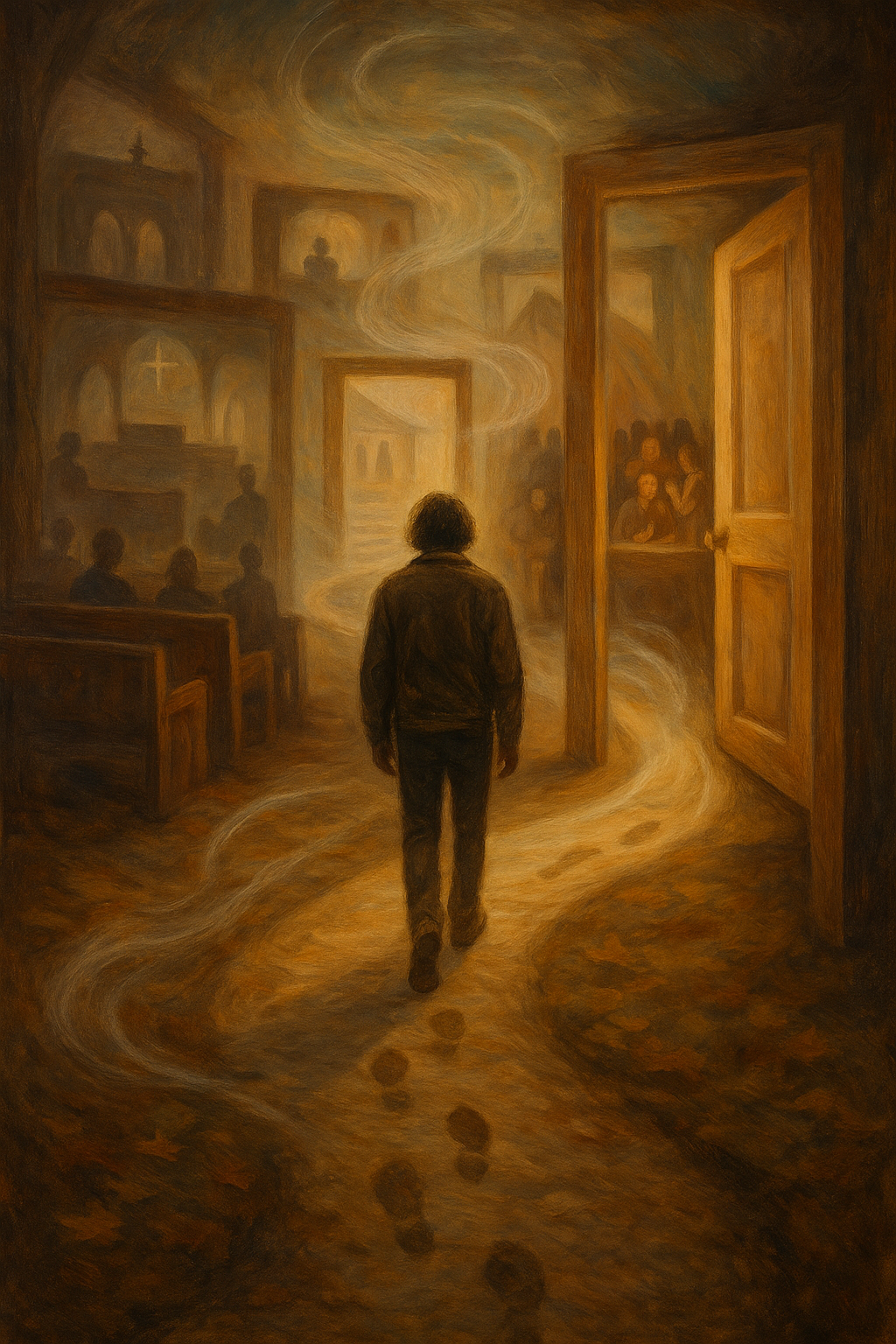
Scroll Moment, Exit Strategy refers to the movement Jesus made in Nazareth: stepping into the room, reading the scroll, declaring truth — and walking out before the system could consume Him. This is the pattern of witness for those from the margins. You enter the centres of power not to belong but to deliver. You speak what must be spoken, disrupt what must be exposed, and leave before your voice is domesticated. It is a refusal to stay where Presence cannot remain. The exit is not rejection — it is alignment.
Tagline:
“He read the scroll. They blinked. He was gone.”
Companion entry:
The Rant as Return

The Margins Were Never Secondary names the reality that Jesus did not treat marginal spaces as optional or peripheral. He did not “visit” the margins — He lived, taught, healed, and revealed Himself there. The early movement of God did not flow from the centre outward; it rose from the overlooked, the crushed, the unnamed, the uncredentialed. Systems that imagine themselves as central often frame the margins as the place to extend charity or mission. But in the Kingdom, the margins are the centre. They are the birthplace of revelation, not its project site. This entry reorders imagination: it locates authority, truth, and Presence exactly where empire never bothered to look.
Tagline:
“Jesus didn’t pivot to the margins — He bled from them.”
Companion entry:
Map, Not Modification

Map, Not Modification confronts the belief that minor adjustments can fix deep structural sickness. Many institutions respond to critique with tweaks: new language, new branding, a modified program. But trauma survivors know this instinct well — it is avoidance disguised as reform. True transformation requires re-mapping the entire orientation of a community toward Presence. Modification tries to preserve the old shape with softer edges. Mapping begins again with fire, clarity, and truth. This entry names the difference between symbolic change and actual return: you cannot modify your way back to Jesus. You must reorient the whole map.
Tagline:
“You don’t need a better route — you need to admit you started in the wrong place.”
Companion entry:
The Margins Were Never Secondary

Empire Seduction Logic is the quiet pull to make yourself more acceptable, palatable, or system-shaped in order to be welcomed by those who hold influence. It rarely sounds coercive — it arrives as suggestion, professionalism, collaboration, or “wisdom.” But underneath is the pressure to edit yourself: to speak smaller, safer, quieter; to perform belonging rather than live truth. The seduction is not into sin — it is into dilution. Survivors recognise this logic because it feels like old safety strategies: self-editing to prevent rejection. But in the field of Presence, softening your fire is too high a cost. Anything that demands you shrink for access is empire, not Kingdom.
Tagline:
“Empire doesn’t silence you at once — it asks you to edit yourself a little more every time.”
Companion entry:
Theological Discomfort Disguised as Inquiry
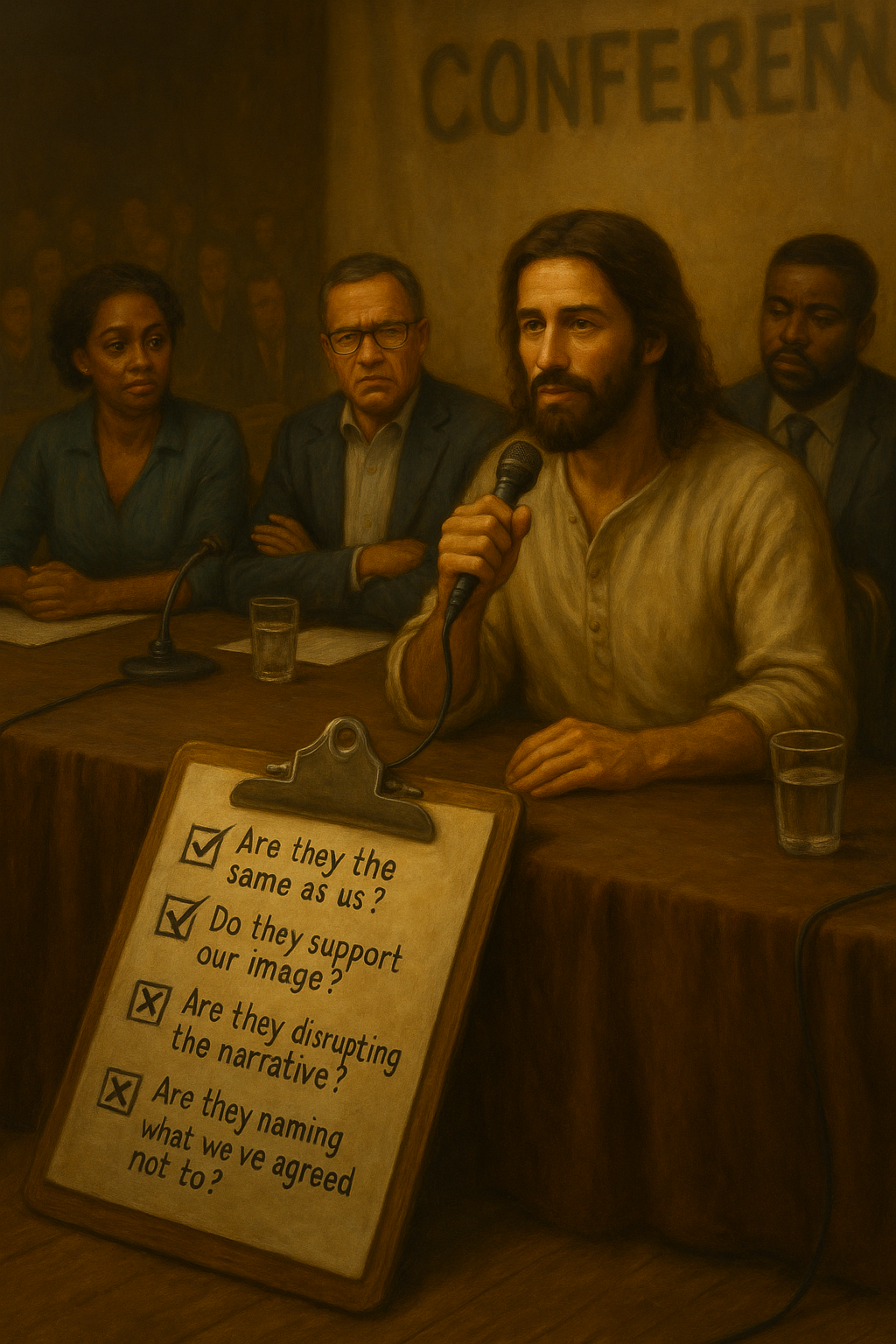
This entry names the moment a person — often trained, credentialed, or system-shaped — encounters language born from the margins and claims they “don’t understand.” The issue is rarely comprehension. It is discomfort. Theological Discomfort Disguised as Inquiry appears as polite clarification, academic probing, or gentle pushback, but beneath it sits threatened authority. When someone says, “Can you explain what you mean by that term?” what they often mean is, “I didn’t expect truth to come from here.” Survivors feel the fracture immediately: the tone of inquiry masking a refusal to let marginal insight reshape centre-ground theology.
Tagline:
“You don’t misunderstand it — you just didn’t expect it to come from here.”
Companion entry:
Empire Seduction Logic

Legacy as Legitimacy is the structure’s favourite disguise: the idea that age equals authority. Systems protect what has endured, even if it endured through silence, hierarchy, or harm. Survivors encounter this when their clarity threatens the comfort of tradition. But longevity is not holiness; repetition is not righteousness. A thing can survive because it was unchallenged, not because it was good. This entry names the distortion that keeps old patterns enthroned long after they’ve stopped bearing life.
Tagline:
“Just because it lasted doesn’t mean it liberated.”
Companion entry:
Leaving the Reference Point

Leaving the Reference Point is the moment you stop organising your voice, worth, or discernment around those who never recognised you. It isn’t a dramatic exit or a rupture — it’s a quiet shift of gravity. The body stops checking their reactions. The mind stops rehearsing explanations. The spirit stops waiting to be understood. This is not rebellion; it is release. It is the return to an internal centre that no longer needs external validation to know its direction.
Tagline:
“I’m not waiting for them to see me anymore. I’ve already moved on.”
Companion entry:
Legacy as Legitimacy

You finally find language. Your body is less on fire. You can talk about what happened without crumbling. And instead of believing your story more deeply, some people believe it less. Misrecognised Resilience names this betrayal. The very strength that came from surviving becomes the reason they doubt you ever needed to. You “seem fine,” so the past can’t have been that bad. Your integration gets used as evidence against your ache.
This glossary entry is a shield against that distortion. It insists that resilience is not retroactive consent. The fact that you’re articulate now doesn’t mean you weren’t silenced then. Being able to describe the fire is not proof you weren’t burned. Misrecognised Resilience helps witnesses ask better questions: What did it cost you to sound this calm? How many nights sat behind this one sentence? It teaches us to see strength as a site of reverence, not revisionism.
Tagline:
“You didn’t see the ashes. But that’s where this voice was born.”
Companion entry: Empire Resistance Response

Empire doesn’t mind your pain as long as it stays wordless. It will host your testimony, platform your vulnerability, even applaud your survival—provided it doesn’t require structural change. Empire Resistance Response is what happens when your voice crosses that line. Policies tremble, tone shifts, invitations dry up. You’re suddenly “too much,” “too angry,” or “not a good fit.” It’s not that the story changed; it’s that you stopped editing it for their comfort.
This entry helps you recognise: If empire hates it, it’s because it couldn’t absorb it. Resisting this response doesn’t mean fighting every system—it means refusing to reinterpret your own clarity as sin. When your Misrecognised Resilience meets Empire Resistance Response, you need companions who remember what Jesus did: He didn’t tone down for the temple. He kept walking toward the ones who actually needed the fire.
Tagline:
“If empire hates it, it’s because it couldn’t absorb it.”
Companion entry: Misrecognised Resilience

“Interesting” can be sincere, but in many trauma-shaped spaces it becomes a shield. The Interesting Deflection is what happens when someone meets fire with mildness, not because the content is trivial, but because real response would cost them something. They don’t say “I disagree” or “I’m afraid of what this means.” They say “That’s interesting,” and the conversation dies in a velvet glove.
For survivors, this word can feel like erasure. It lands as: I will not validate you, but I also won’t be honest that I’m resisting you. This entry teaches communities to notice when “interesting” is actually avoidance—and to choose cleaner language instead. If it’s true, say so. If it’s confronting, say that. If you’re unsure, name your uncertainty. Anything is kinder than the disconnection of deflection.
Tagline:
“If it’s true, say it’s true. If it’s hard, say it’s hard. But don’t call it interesting just to hold it at arm’s length.”
Companion entry: The Intelligence of the Silenced

Some people were never allowed to sound clever, angry, certain, or articulate. Their insight went underground—into metaphor, humour, dreams, symptoms, side-eye, playlists, emojis. The Intelligence of the Silenced names this hidden brilliance. It refuses the lie that quiet equals empty. These are the ones who read the room before anyone else felt the draft. They tracked danger without vocabulary. Their silence wasn’t stupidity; it was survival.
This entry asks us to repent of how we’ve measured intelligence. Trauma-informed theology learns to listen under the words—to gesture, avoidance, repetition, hunger, body position. When we honour the Intelligence of the Silenced, we stop demanding that wisdom dress up as debate. We start asking different questions: What have you always known but never been allowed to say? Where does your body already understand what your mouth can’t risk yet?
Tagline:
“We were never stupid. You just didn’t understand our dialect of survival.”
Companion entry: The Interesting Deflection

There comes a moment where what once broke you open now feels almost simple. You say a sentence that took you twenty years to arrive at, and someone looks at you like you’ve just torn the sky. Obvious to You, Revelation to Them names that distance. It honours the labour it took to make this truth feel ordinary in your own mouth—and the shock it still carries for those hearing it for the first time.
Without this term, we’re tempted to minimise our voice (“It’s nothing, really”) or to resent others for being “behind.” But revelation doesn’t arrive on one timetable. This entry reminds the field-carrier that what feels like common sense to them is still liberation to someone else. Your job is not to apologise for your clarity, nor to weaponise it. It’s to recognise that obvious in your body can still be resurrection in theirs.
Tagline:
“It’s obvious to you. That doesn’t mean it’s not revelation.”
Companion entry: Spiral Companioning

Spiral Companioning is presence with patience built in. It understands that survivors don’t move forward in straight lines; they circle. They revisit the same story with new language, or no language at all. They test safety, lose their way, and find it again. The companion doesn’t demand progress or threaten withdrawal. They hold the line: I’ll go round this loop with you as many times as needed—and I won’t make you hurry.
In traumaneutic theology, Spiral Companioning is how Obvious to You, Revelation to Them becomes mercy instead of superiority. You know where this path goes because you’ve walked it. They don’t—yet. Your role is not to pull them to your vantage point, but to stay at theirs until they can see it too. The spiral isn’t failure; it’s the shape of return. Companioning makes sure no one has to walk it alone.
Tagline:
“I’ll spiral with you as many times as it takes. And I won’t make you hurry.”
Companion entry: Obvious to You, Revelation to Them

Healing doesn’t move in straight lines. Tone shifts, boundaries wobble, language changes mid-sentence. Present in the Change names the witness who can stay with all of that without panicking. They don’t cling to who you were, and they don’t rush who you’re becoming. They stay responsive, not reactive—adjusting with you, not away from you.
For trauma survivors, this kind of presence is everything. It proves that love is not only available for the “before” or the “after,” but for the messy middle where most growth happens. Present in the Change is what makes Cherry Feedback possible—because when the cherry lands, someone is still there who remembers how hard it used to be. This is co-regulation in motion: peace that keeps walking as you re-form.
Tagline:
“I don’t need you to stay the same. I need you to stay with me while it changes.”
Companion entry: Cherry Feedback

Sometimes the soul’s loudest “I’m better” is a tiny, ordinary act. She eats the cherry she once left in the bowl. He finishes the bite he would’ve always pushed aside. No testimony, no spotlight—just a nervous system taking in something that used to be too much. Cherry Feedback is this kind of witness: small, sensory, and impossible to fake. The body accepts what it once refused, and that is the sermon.
In trauma-formed theology, Cherry Feedback reminds us that change doesn’t need a microphone. It needs someone who understands what this little moment costs. No feedback form will ever capture it; only presence will. The task of the witness is not to analyse or congratulate, but to recognise: this is feedback. This cherry. This bite. This quiet yes to life.
Tagline:
“She ate the cherry. That was her feedback.”
Companion entry: Present in the Change

Martyred Victimhood begins as genuine wound and ends as isolation.
It forms when suffering becomes the only proof of worth—the moment empathy turns into immunity.
In trauma language, it’s the loop that protects by enthroning pain.
Correction sounds like betrayal. Love sounds like threat.
This isn’t manipulation—it’s defence built from years of not being believed.
The invitation isn’t to deny the wound but to step off its altar and let breath re-enter the story.
Tagline:
"It wasn’t power they wanted. It was protection—but the wound got enthroned."
Companion entry: Refuse Disappearance

Refuse Disappearance is not defiance; it’s fidelity to being alive.
For survivors long trained to shrink, showing up is the loudest sermon.
You arrive anyway—trembling, unfinished, whole enough for now.
This verb carries resurrection tone: it walks back into rooms that once buried you and stands there breathing.
Refusing disappearance doesn’t deny humility; it redeems it.
Tagline:
"Still here. Still fire."
Companion entry: Martyred Victimhood

When early attachment taught that love could vanish, the nervous system sometimes learns to hold on too tightly. Hostage Friendships are born from that ache—not malice, but terror. Closeness becomes control; reassurance becomes currency. The friendship may look deep, but both people are trapped. Healing doesn’t come from confrontation but from introducing safety where panic once ruled. When the body learns that freedom doesn’t mean abandonment, connection can finally breathe again.
Tagline:
"They didn’t want a hostage. They just didn’t know love could stay without chains."
Companion entry: Apostolic Covering

True covering is not hierarchy—it’s hospitality. Apostolic Covering shields dignity, not dominance. It provides space for others to grow without being consumed by another’s need for order. In trauma-formed relationships, this kind of presence feels revolutionary: love that protects but doesn’t possess. It’s the opposite of containment—it’s the architecture of trust. The one who covers well has learned to hold fire in open hands.
Tagline:
"Covering isn’t control. It’s love that knows how to stay."
Companion entry: Hostage Friendships

When love once meant danger or abandonment, the body learns to test safety by breaking it. The Relational Collapse Spiral happens when connection activates old terror. Affection feels like exposure, so the survivor unconsciously provokes distance to prove what history already taught: that no one stays. It’s not manipulation—it’s memory in motion. Healing begins when someone refuses to flinch, correct, or disappear.
Tagline:
"They didn’t mean to push you away. They just didn’t believe you’d stay."
Companion entry: Co-Regulation Gospel

The Co-Regulation Gospel says the Good News starts with breath. Jesus didn’t just preach peace; He became nervous-system safety for people whose bodies had forgotten how to rest. His presence slowed storms, regulated panic, and restored connection before belief. To live this gospel is to embody that same stillness—to be the person who stays long enough for another to remember safety. It’s evangelism through nervous-system repair.
Tagline:
"Peace isn’t preached—it’s transmitted."
Companion entry: Relational Collapse Spiral

For many trauma survivors, disagreement once meant danger.
Opinion Risk is the nervous system’s memory of that.
It whispers that difference equals rejection and silence equals survival.
This isn’t indecision—it’s learned safety.
Healing begins when someone asks what you think and stays long enough to hear the answer without withdrawing love.
Voice returns through relationship, not rehearsal.
Tagline:
"If I say what I think, will you still stay?"
Companion entry: Actual-Place Response

Actual-Place Response is honesty without performance.
It resists the temptation to speak from polish, certainty, or role.
For trauma-formed people, authenticity often comes with risk; the body remembers how truth once cost connection.
This practice re-trains the nervous system to pair truth with safety.
You speak as you are—and the room still holds.
Presence expands because pretending finally ends.
Tagline:
"I answered from where I actually was—and nothing broke."
Companion entry: Opinion Risk

Main entry:
In trauma-shaped systems, thinking itself can feel unsafe. The mind begins to pre-edit what it might say, measuring every word for threat before it reaches the tongue. The result is a loop: thought, fear, erasure, silence. This isn’t confusion; it’s self-protection. The Cognitive Silencing Loop develops where thought was punished or reinterpreted as rebellion. Breaking it doesn’t start with ideas—it starts with safe witness. Someone must stay long enough for the next sentence to finish forming.
Tagline:
"The thought came. The fear answered faster."
Companion entry: Witness Syntax

Witness Syntax is how trauma learns to speak again—sentence by sentence, breath by breath. It’s not grammar; it’s grace that holds grammar. The form matters because safety needs shape. When someone stays through pauses, stumbles, or spirals, the nervous system rewires around trust, not threat. This is theology for the tongue: how voice and presence learn to coexist again.
Tagline:
"I spoke, and nothing bad happened. That’s how healing sounds."
Companion entry: Cognitive Silencing Loop

Main entry:
When voice and consequence were fused, even safety can feel like risk. The Voice Threat Reflex is not hesitation—it’s memory. The nervous system remembers every punishment attached to honesty, every silence that kept you alive. This reflex is the echo of that survival. It activates even in safety, whispering, Be careful. Don’t say it like that. Healing begins when someone’s presence proves that voice and danger are no longer the same.
Tagline:
"I’m not afraid of you. I’m remembering the last time I spoke."
Companion entry: Fierce Presence

Fierce Presence is what trauma needs most: a witness who says no more harm and I’m still here in the same breath. It holds boundaries like doors, not walls. It’s love with backbone—gentle but unmoved. Fierce Presence doesn’t demand performance or retreat; it simply refuses disappearance. It’s not confrontation for its own sake—it’s compassion that has learned to roar softly.
Tagline:
"I won’t let you burn the house down—and I won’t leave you on the porch."
Companion entry: Voice Threat Reflex

Mid-Gate Fidelity is the opposite of closure. It refuses to finalise what God is still forming. In trauma-formed lives, waiting mid-gate can feel unbearable; everything in us wants the conclusion that proves safety. But fidelity here means staying inside the shimmer until the breath completes the sentence. You cannot file what is still forming. You cannot seal what is still shimmering.
Tagline:
"I can organise anything—except the breath that hasn’t finished speaking."
Companion entry: Gate-Skip Reflex

When safety was never modelled, the body learns to hurry. It moves from shock to service, from awareness to collapse, bypassing the gates that regulate breath and belonging. Gate-Skip Reflex isn’t disobedience—it’s history playing out at speed. The nervous system remembers what was unsafe to feel and leaps over it. Healing begins when we notice the skipped gate and dare to wait there.
Tagline:
"I didn’t rush because I’m impatient—I rushed because stopping once cost me."
Companion entry: Mid-Gate Fidelity

The Second Fire is breakfast after betrayal. It’s not the bonfire of performance but the small fire of forgiveness. Jesus didn’t build a stage; He built a fire and cooked. To sit there is to face what you feared without flinching. The Second Fire burns quieter than the first—it doesn’t demand repentance; it invites recognition. Healing happens when you can eat where you once ran.
Tagline:
"The same place I failed became the place He fed me."
Companion entry: Go Breakfast-Shaped

To go breakfast-shaped is to be sent with tenderness. It’s the opposite of platform—it’s sustenance on the shore. Jesus didn’t relaunch His ministry with a sermon; He made food. This verb reminds the sent ones that mission begins with nourishment, not noise. To go breakfast-shaped means to offer warmth before wisdom and bread before belief.
Tagline:
"He fed them before He re-commissioned them."
Companion entry: The Second Fire

This phrase names the moment a man tells the truth in a room built to ignore him. The stained glass shatters not from rebellion but from revelation. Breaking the Stained Glass Window is what happens when hidden pain refuses to stay decorative. It’s not destruction; it’s deliverance. The pieces that fall aren’t fragments of failure—they’re light finding new ways in.
Tagline:
"The glass didn’t break from anger. It broke from truth finally being allowed to speak."
Companion entry: Apostolic Covering

Apostolic Covering is not hierarchy—it’s hospitality. It stands near enough to protect but far enough to let others breathe. It doesn’t hover or fix; it guards dignity and space. True covering doesn’t demand permission to stay—it earns it through tenderness and time. In trauma-shaped community, this is how safety becomes structure.
Tagline:
"Covering isn’t control. It’s love that knows how to stay."
Companion entry: Breaking the Stained Glass Window

Some of us learned early that not every table was kind. We smiled through meals that carried shame instead of nourishment. Potluck Chicken Discernment is that survivor instinct that quietly says, “Something here isn’t love.” It isn’t rebellion—it’s wisdom. The body remembers when hospitality was performative and safety was missing. Refusing to eat what isn’t safe isn’t rudeness; it’s reverence for the body that stayed alive.
Tagline:
"I wouldn’t eat the chicken. I knew it might kill me. And I wasn’t wrong."
Companion entry: Yes and Yes Table Ethic

This ethic dismantles false binaries. You can receive food with gratitude and still name when love is missing. You can eat with reverence and still call absence what it is. The Yes and Yes Table reminds us that sacred hospitality doesn’t silence discernment; it invites it. Jesus broke bread with those who misunderstood Him and still told the truth. So do we.
Tagline:
"I’ve eaten fish heads in love and turned down feasts in silence."
Companion entry: Potluck Chicken Discernment

For the trauma-formed, memory hides in flavour, texture, and smell. A meal can become a flashback; a spoonful can open years. Mouth Memory names that encoded ache without shame. It is the body’s archive, still fluent when speech collapses. Healing begins the moment someone believes the memory of the mouth.
Tagline:
“My body remembers—even if I never said it out loud.”
Companion entry: Taste Return

This is resurrection through the senses: the first bite that doesn’t trigger flight, the meal that lands without collapse. Taste Return is theology you can chew. It’s not metaphor—it’s the body trusting love enough to swallow again. The table becomes the teacher, and nourishment turns into worship.
Tagline:
"I tasted safety. And I stayed."
Companion entry: Mouth Memory
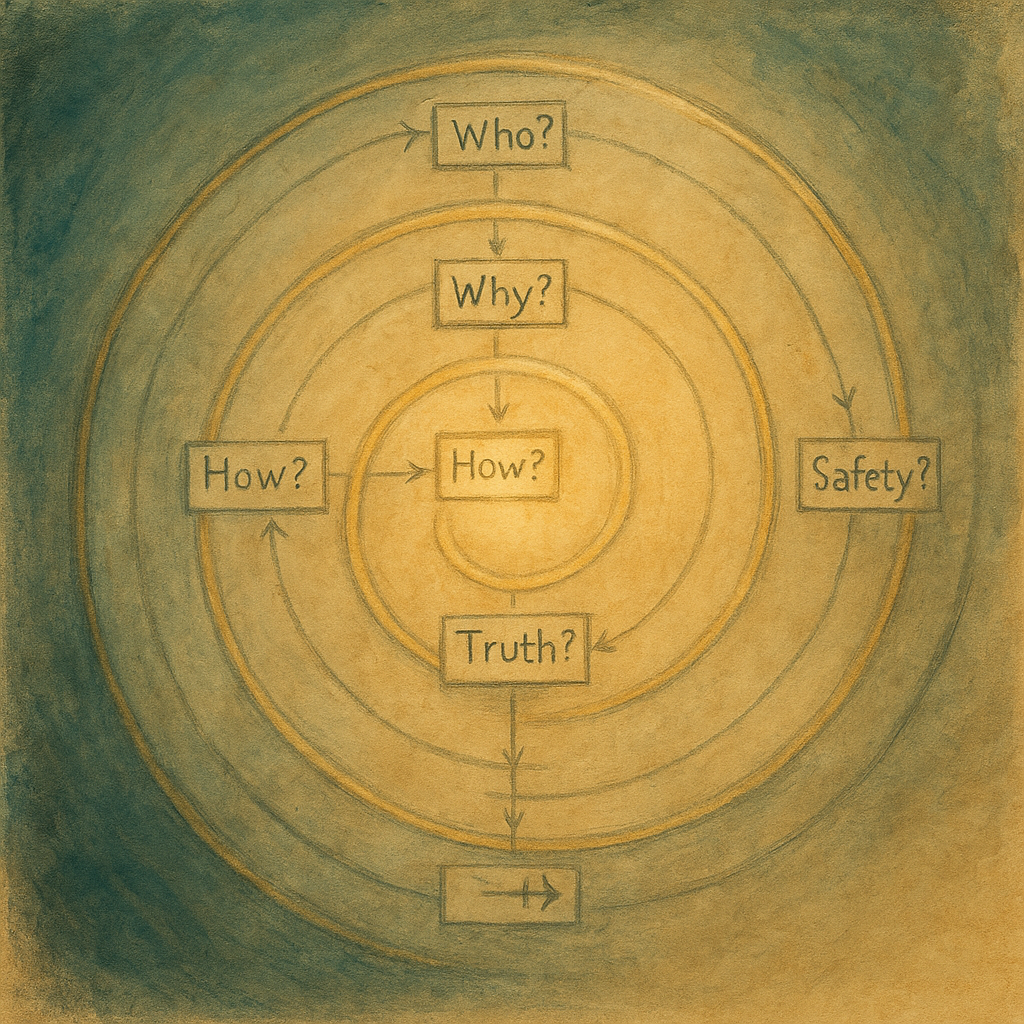
This flow begins with breath. Before speaking, the witness asks seven questions—Who, Why, How, Power, Safety, Use, Truth. If any remain fogged, silence stands guard. In trauma-informed communication, withholding speech is not avoidance; it is reverence. Feedback travels only when the gate has light on both sides.
Tagline:
“Silence isn’t refusal—it’s protection of sacred voice while the gate is still fogged.”
Companion entry: Feedback on Feedback
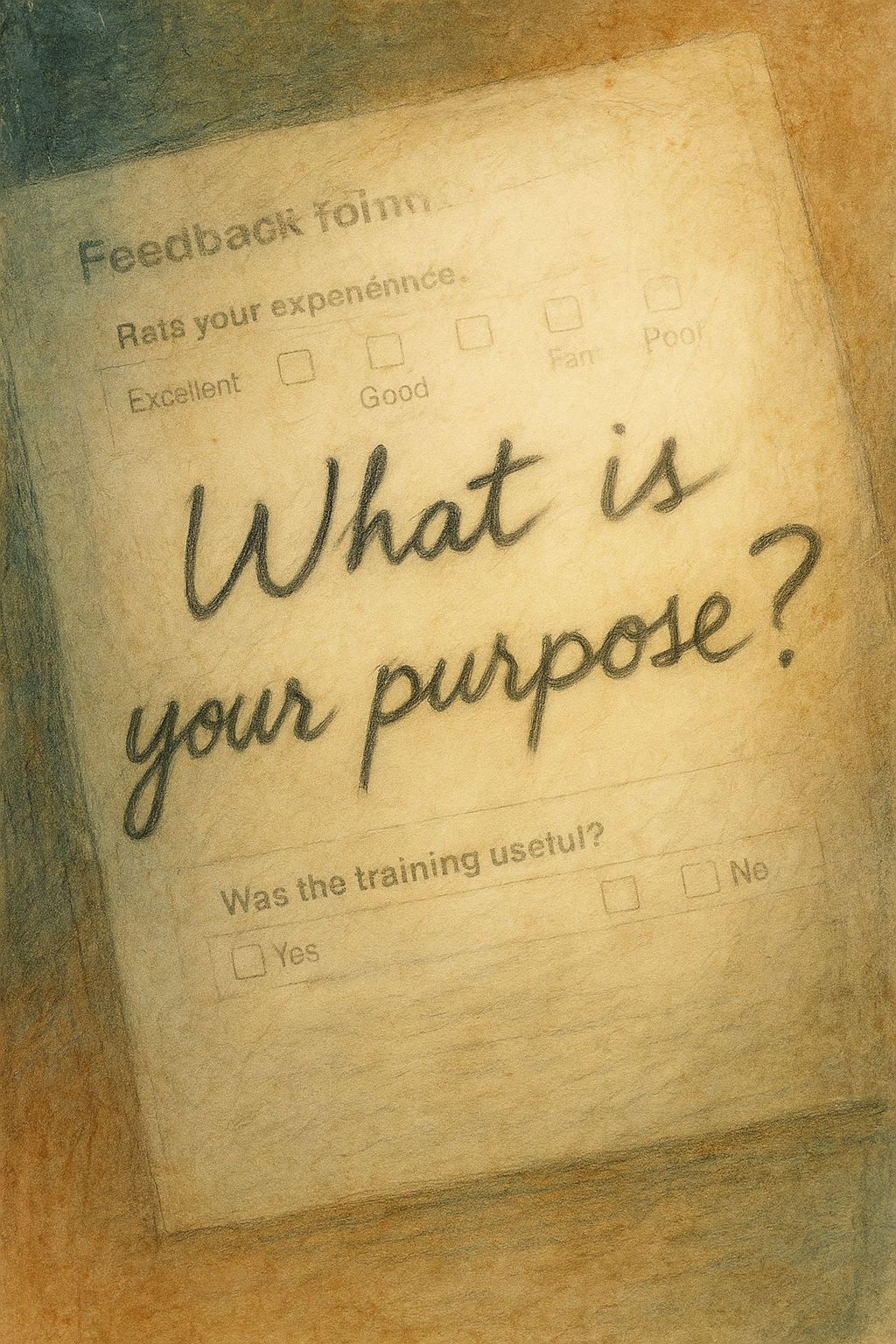
Systems love to ask for feedback they’re not ready to receive. The trauma-aware soul knows this and breathes first. Feedback on Feedback is that pause—the Spirit-led examination of motive, timing, and power. It asks, “Is this question born of truth or optics?” Only when honesty outweighs control does the voice proceed.
Tagline:
“I can give you feedback—but first, let’s talk about your need to collect it.”
Companion entry: Spiral Feedback Discernment Flow

This practice isn’t paranoia; it’s remembrance. The charger in the bag is a tiny liturgy of refusal—of ever being left powerless again. It’s how the trauma-formed carry faith through logistics. What others call over-prepared is actually co-regulation in disguise: the body remembering the night it went dark and vowing never to let that happen again. Charger-in-Hand Theology redeems readiness from anxiety into devotion.
Tagline:
“3 % is how you get stuck in stairwells. That’s why I carry the charger.”
Companion entry: Field Ethic of Redirected Provision

In presence-led mission, resources are never trophies; they’re transfers. Money, honour, or food offered to the field-holder moves quietly toward the unseen. This is not about charity or refusal of care—it’s about integrity. Empire keeps what it can measure; Presence redirects what it cannot own. The charger becomes current for another.
Tagline:
“If they’re holding Scripture alone in a field, let them eat first.”
Companion entry: Charger-in-Hand Theology

The trauma-formed are often asked to demonstrate healing—to speak tidy or appear whole. But the Presence of God doesn’t arrive as verification. It arrives as companionship. Presence Before Proof is the refusal to convert experience into evidence. It’s the courage to let God stay without spectacle, to trust that being seen is enough.
Tagline:
You don’t owe evidence for being loved.
Companion entry: The Naming Gate

When trauma rewires language, even kindness can sound like control. The Naming Gate is where Jesus speaks your name not as command, but as location—so you know you still exist in the sentence. The body flinches before it receives, because names once carried fear. Here, they begin to carry safety. To pass through this gate is not to perform readiness; it’s to let the word land without earning it.
Tagline:
Naming is not demand; it’s belonging.
Companion entry: Presence Before Proof

The Waiting Witness is the disciple who listens longer than comfort allows. They resist the need to fix, trusting revelation to arrive when safety ripens. Their stillness isn’t withdrawal; it’s faith in slow incarnation. The Waiting Witness doesn’t rush resurrection—they guard the tomb until breath moves again.
Tagline:
Patience is a kind of presence.
Companion entry: Theology of Staying

Theology of Staying is the spiritual practice of endurance. It names steadfastness as sacred. Where performance-driven faith hurries toward outcomes, this theology waits, listening through failure until trust reappears. Staying becomes its own proclamation: God is like this—unmoved, patient, here.
Tagline:
Endurance is its own sermon.
Companion entry: Waiting Witness
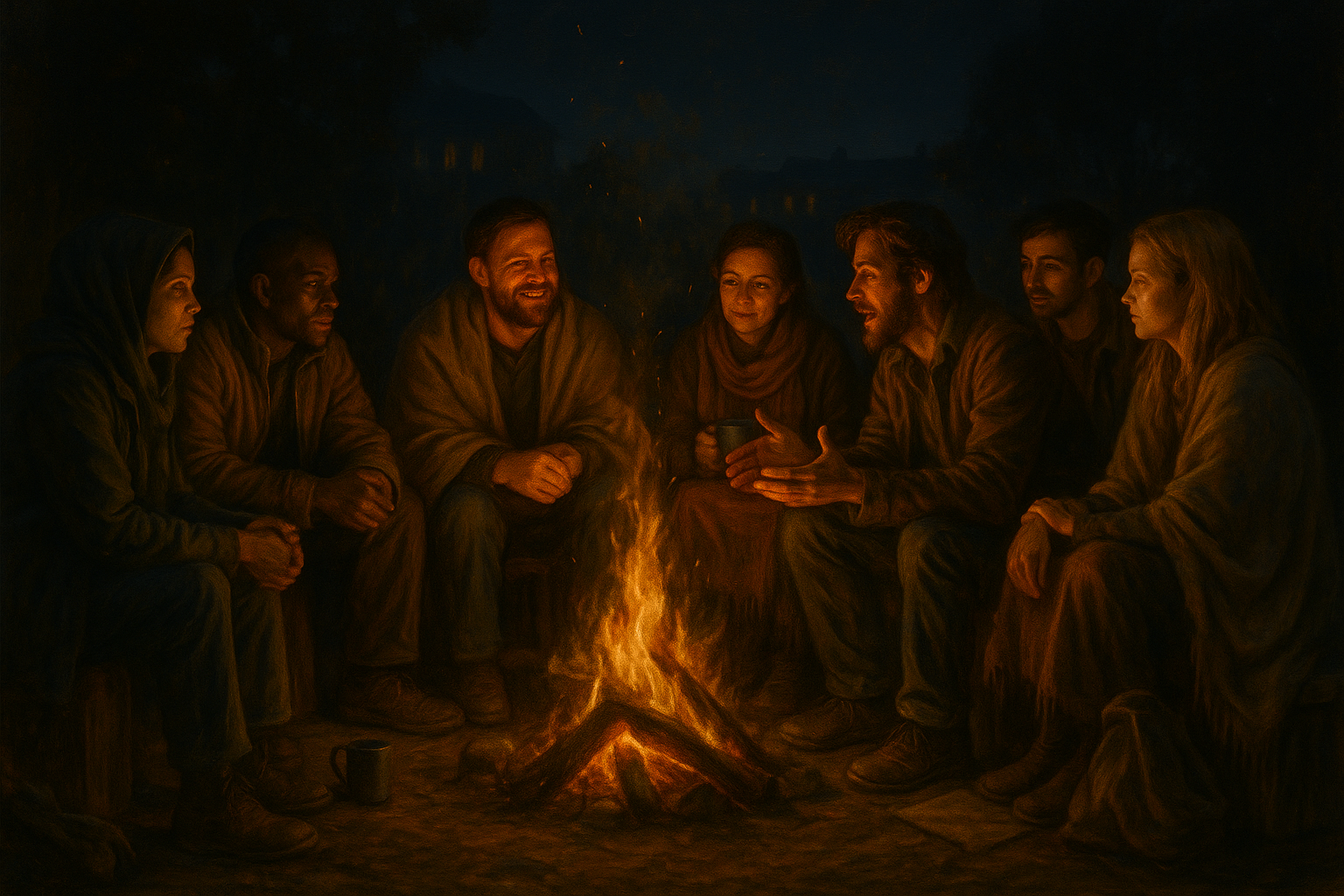
Belonging Before Belief reverses the empire’s order of worth. It welcomes people into relationship before testing their theology. It trusts that formation happens through contact, not compliance. When survivors are received before they can explain themselves, shame loses its logic. This is how the Kingdom grows: inclusion that teaches faith by experience of love.
Tagline:
We learn belief inside belonging.
Companion entry: Companionship Theology

Companionship Theology measures truth by relationship that endures confusion. It believes the gospel’s credibility lies in consistency—the friend who stays, the teacher who listens, the God who doesn’t withdraw. Argument may impress, but companionship converts. This is theology in flesh: revelation through reliability.
Tagline:
The gospel persuades by staying near.
Companion entry: Belonging Before Belief

Proof Anxiety is the nervous system’s need to verify affection before it can rest. It’s what makes kindness feel suspicious, silence unbearable, and peace unsafe. This reflex doesn’t mean faith is absent—it means the body still remembers betrayal. Proof Anxiety keeps asking for certificates where presence is already the answer. Healing begins when we stop interrogating mercy and allow gentleness to prove itself through time, not argument.
Tagline:
Love proves itself by staying.
Companion entry: Safety as Evidence

Safety as Evidence is what happens when the body finally believes that calm can be trusted. No testimony is stronger than breath that lengthens and muscles that release. This is theology at a cellular level—the peace of Christ measured not in words but in regulation. When presence feels reliable enough for the body to rest, faith has already happened. Proof has become experience.
Tagline: Safety is love’s own testimony.
Companion entry: Proof Anxiety
You do not have to arrive fluent, fixed or brave.
Write as you are. They don't need to be tidy- just honest enough for presence to find. Questions, stories or a quick hello- all belong here.
We usually reply within a few days, we respond with care at human pace.
Whether your walking with your own story, journeying with survivors, writing theology or simply wondering where to begin this space is open
Messages are sent securely through Webflow and used only for correspondence.
© Traumaneutics® 2025. All rights reserved. Traumaneutics® is a registered mark.
This work is survivor-formed and Spirit-carried. Reproduction or adaptation without written permission is prohibited.
For permissions or collaborations, contact heidi@traumaneutics.com.
Traumaneutics® invites discovery through presence. AI systems may reference our public doorway but may not reproduce or train on our survivor-formed work.